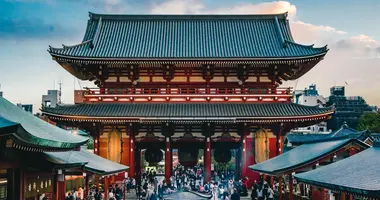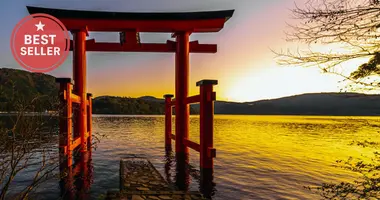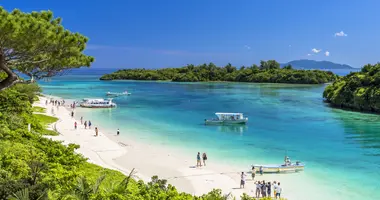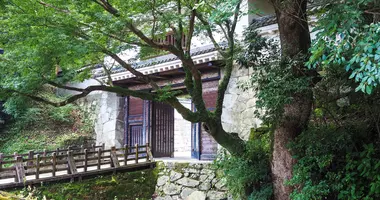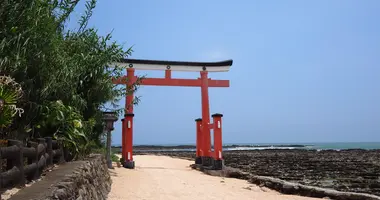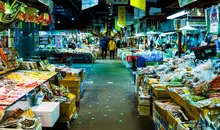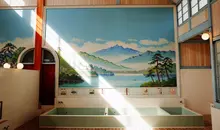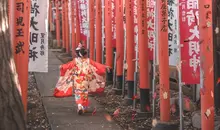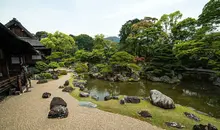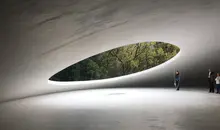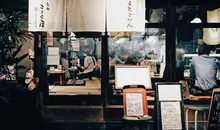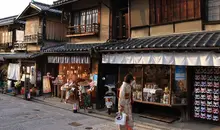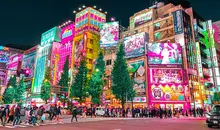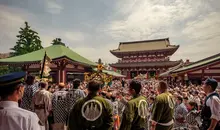Chiran Guide: Exploring the historic town of Samurai and Kamikaze
- Published on : 19/04/2024
- by : Japan Experience
- Youtube
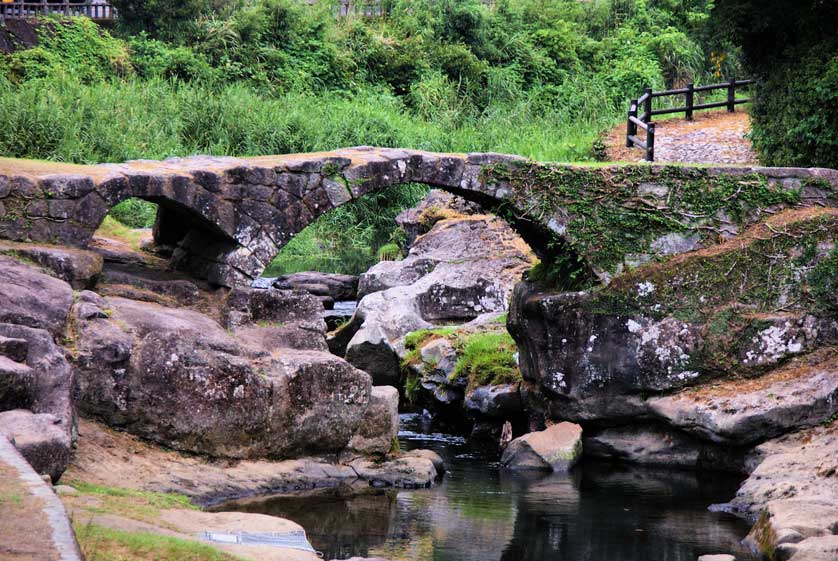
Yabitsu Bridge, Chiran, Kagoshima
Nestled in the heart of Kagoshima Prefecture, Chiran 知覧 is a small town with a rich historical tapestry. Once a thriving samurai district, it later became the site of a significant World War II airbase. Today, Chiran offers visitors a unique blend of ancient samurai culture and poignant wartime history. From well-preserved samurai residences to the somber Chiran Peace Museum, this guide will take you through the must-see attractions and hidden gems of this fascinating town.
Discovering Chiran's Samurai District: A journey through time
The samurai residence district of Chiran is a beautifully preserved slice of Edo Period Japan. Stretching for 700 meters along a single street, this district offers visitors a glimpse into the lives of samurai from 250 years ago. The area is characterized by its impressive stone walls and meticulously trimmed hedges, creating an atmosphere that transports you back in time.
One of the highlights of the samurai district is the seven beautifully landscaped gardens open to the public. These gardens, designed to be viewed from the residences, showcase different styles:
- Five karesansui (dry landscape) gardens
- One pond garden
- One garden composed of trimmed shrubs
Each garden tells its own story and reflects the aesthetic preferences of its original samurai owners.
While exploring the district, don't miss the Sata Residence, known for its exquisite garden featuring a small waterfall and pond. The Mori Residence is another must-see, with its spacious garden that incorporates the surrounding mountains into its design, a technique known as "borrowed scenery".
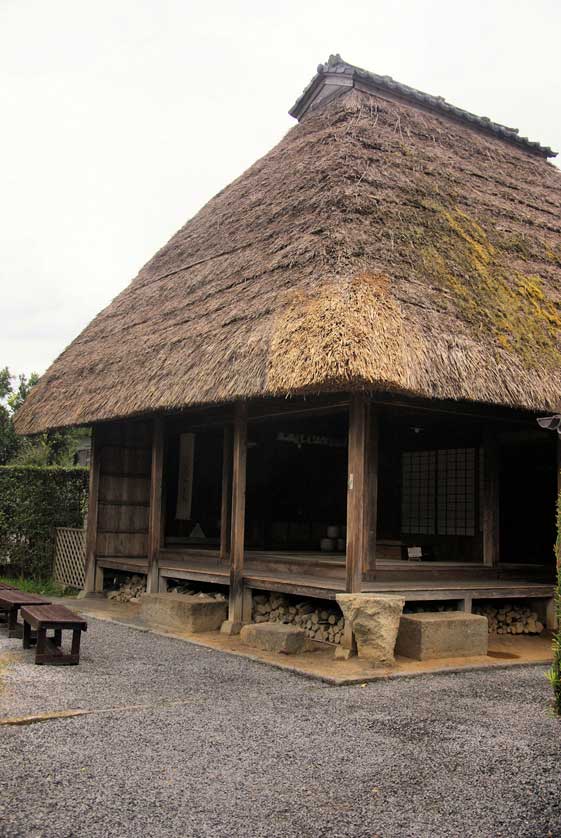
Samurai District, Chiran, Kagoshima
The Chiran Peace Museum for Kamikaze Pilots: Remembering history and promoting peace
A visit to Chiran would be incomplete without exploring the Chiran Peace Museum For Kamikaze Pilots. This museum, located on the site of the former Chiran Air Base, offers a poignant look into the lives of the young pilots who made the ultimate sacrifice during World War II.
The museum houses an extensive collection of over 1,000 artifacts, including personal letters, photographs, and belongings of the kamikaze pilots. These items provide a deeply human perspective on a controversial chapter of history. Visitors can also see restored aircraft used in kamikaze missions, including a Mitsubishi Zero fighter recovered from the seabed in 1980.
While the subject matter is undoubtedly somber, the museum's goal is to promote peace and understanding. It serves as a powerful reminder of the human cost of war and the importance of striving for peaceful resolutions to conflicts.
Natural beauty and traditional gardens: Chiran's green treasures
Beyond its historical sites, Chiran is renowned for its natural beauty. The town is famous for its high-quality green tea production, and the surrounding landscape is dotted with picturesque tea plantations. Visitors can enjoy strolling through these verdant fields and even participate in tea-picking experiences during the harvest season.
For nature enthusiasts, the Bandokorobana Natural Park offers stunning coastal views. From here, you can see the iconic Mt. Kaimondake, often referred to as the "Mt. Fuji of Satsuma". The park is also home to the Seahorse Museum, where you can learn about these fascinating creatures.
Don't miss the opportunity to visit the Kiyomizu Magaibutsu Complex, where you'll find 193 Buddhist images carved into a 400-meter-wide cliff face. The "Great Five-Storied Pagoda" carved here is believed to be the largest of its kind in Japan.
Unique cultural experiences: From tea ceremonies to ancient shrines
Chiran offers visitors several unique cultural experiences. At the Satsuma-eikokukan Museum, you can learn about the historical relationship between the Satsuma domain and England. The museum also offers the chance to enjoy British-style tea and confectioneries with a Japanese twist.
For a more traditional Japanese experience, visit the Toyotamahime Shrine. This shrine is home to a rare sight: a puppet theatre with karakuri dolls powered by a waterwheel. Although performances are rare, the mechanics alone are fascinating to observe.
Tea enthusiasts shouldn't miss the opportunity to participate in a traditional tea ceremony. Many local tea houses offer this experience, allowing visitors to deepen their appreciation for this important aspect of Japanese culture.
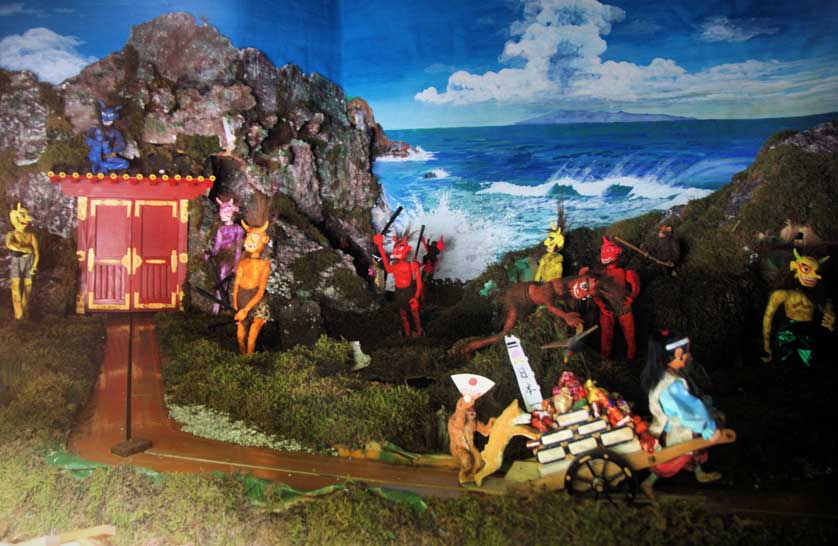
Display of mizukarakuri ningyo, Toyotamahime Shrine, Chiran, Kagoshima, Kyushu
Hidden gems: Lesser-known attractions in Chiran
While Chiran's main attractions are well-known, there are several hidden gems worth exploring:
- Chiran Doll & Toy Museum: Housing over 10,000 items, this museum showcases Japanese dolls from the Edo Period to the present day.
- Tomiya Shokudo: This restored eatery was once frequented by kamikaze pilots. Now a small museum, it offers insight into the daily lives of these young men.
- Chiran Castle Ruins: While little remains of the original structure, the site offers a peaceful walk and beautiful views of the surrounding area.
- Kamafuta Shrine: Known as a "spiritual oasis", this shrine is said to bestow good luck on visitors who pray with a pot cover over their head.
Practical information: Getting to and around Chiran
Chiran is easily accessible from Kagoshima, the largest city in the region. Here's how to get there:
- From Kagoshima Chuo Station, take a train on the Ibusuki Makurazaki Line to Hirakawa Station (36 minutes), then a bus to Chiran (32 minutes).
- Alternatively, direct buses run from Kagoshima to Chiran, taking about 75 minutes.
- For more flexibility, consider renting a hire car. This allows you to combine your visit to Chiran with other nearby attractions like Ibusuki Onsen.
Once in Chiran, most attractions are within walking distance. For those wanting to venture further, bicycle rentals are available in the town center.
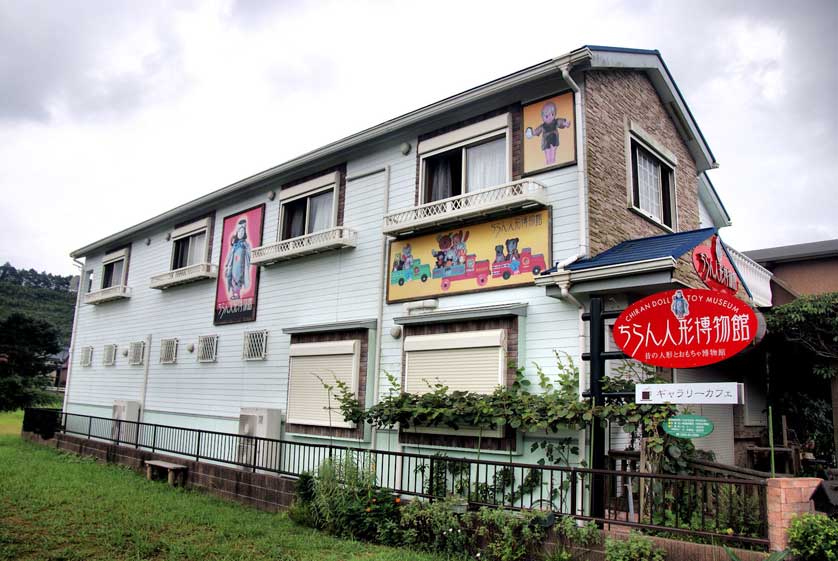
Chiran Doll & Toy Museum, Chiran, Kagoshima
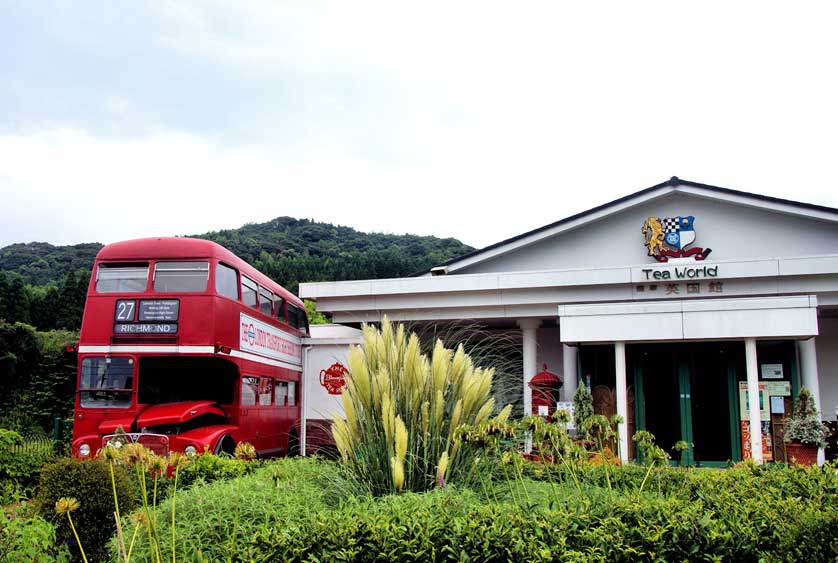
Tea World with London Bus, Chiran, Kagoshima Prefecture
Where to stay and eat: Accommodation and dining options in Chiran
While many visitors come to Chiran on a day trip from Kagoshima, staying overnight allows for a more relaxed exploration of the town. Accommodation options include:
- Several traditional ryokan (Japanese inns) in town
- The Chiran Green Business Hotel, a convenient option on the main road
- For a unique experience, consider staying at one of the minshuku (family-run guesthouses) in the area
For dining, Chiran offers several options:
- Try local specialties like Satsuma age (deep-fried fish cake) and kurobuta (black pork) at traditional restaurants
- Visit a local tea house to sample Chiran's famous green tea and wagashi (traditional Japanese sweets)
- For a historical dining experience, check out the Tea World museum and café, which focuses on the relationship between Satsuma and England
Whether you're a history buff, nature lover, or cultural enthusiast, Chiran offers a wealth of experiences. This small town, with its blend of samurai heritage and wartime history, provides a unique glimpse into Japan's past while promoting a message of peace for the future. As you explore its streets, gardens, and museums, you'll find yourself transported through time, gaining a deeper appreciation for the complex tapestry of Japanese history and culture.
